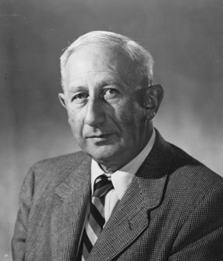- 1610: Galileo
- 1676: Ole Rømer
- 1687: Isaac Newton
- 1781: William Herschel
- 1838: Friedrich Bessel
- 1861: William and Margaret Huggins
- 1912: Henrietta Leavitt
- 1917 Einstein
- 1920: Harlow Shapley
- 1929 Edwin Hubble
- 1948: Ralph Alpher
- 1949: Fred Hoyle
- 1963: Maarten Schmidt
- 1964: Arno Penzias and Robert Wilson
- 1978: Vera Rubin and Kent Ford
- 1989: Margaret Geller and John Huchra
- 1992: John Mather and George Smoot
- 1995: Robert Williams
- 1998: Saul Perlmutter and Brian Schmidt
- 2010: Wendy Freedman
Walter Baade
 |
| Walter Baade. Image courtesy of the Observatories of the Carnegie Institution for Science. |
The Big Bang theory had a serious drawback. Certain types of radioactive rocks on Earth had been dated to at least 3 billion years old. However, using Edwin Hubble’s measurements of the expanding universe, it appeared that if the clock were run backward, the galaxies would have collapsed on top of each other just 1.8 billion years ago. Earth could not be older than the universe, so something must be wrong.
A positive step was taken by Walter Baade, who was one of the first people to use the new 200-inch telescope at Mount Palomar. Baade discovered that there were two types of Cepheid variable stars. Hubble had compared dimmer stars in our own galaxy with stars four times as bright in other galaxies. That meant the galaxies were twice as far away as previously measured, and the universe was at least 3.6 billion years old—at least as old as Earth.